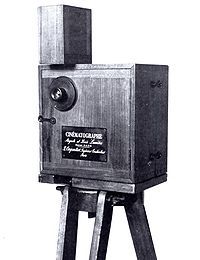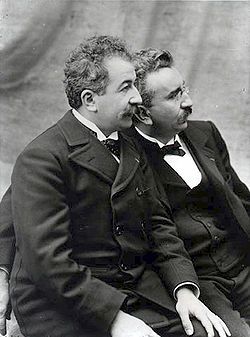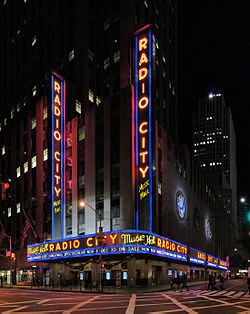Cross posted from The Stars Hollow Gazette
This is your morning Open Thread. Pour your favorite beverage and review the past and comment on the future.
Find the past “On This Day in History” here.
January 7 is the seventh day of the year in the Gregorian calendar. There are 358 days remaining until the end of the year (359 in leap years).
On this day in 1789, the first US presidential election is held. The United States presidential election of 1789 was the first presidential election in the United States of America. The election took place following the ratification of the United States Constitution in 1788. In this election, George Washington was elected for the first of his two terms as President of the United States, and John Adams became the first Vice President of the United States.
Before this election, the United States had no chief executive. Under the previous system-the Articles of Confederation-the national government was headed by the Confederation Congress, which had a ceremonial presiding officer and several executive departments, but no independent executive branch.
In this election, the enormously popular Washington essentially ran unopposed. The only real issue to be decided was who would be chosen as vice president. Under the system then in place, each elector cast two votes; if a person received a vote from a majority of the electors, that person became president, and the runner-up became vice president. All 69 electors cast one vote each for Washington. Their other votes were divided among eleven other candidates; John Adams received the most, becoming vice president. The Twelfth Amendment, ratified in 1804, would change this procedure, requiring each elector to cast distinct votes for president and vice president.
In the absence of conventions, there was no formal nomination process. The framers of the Constitution had presumed that Washington would be the first president, and once he agreed to come out of retirement to accept the office, there was no opposition to him. Individual states chose their electors, who voted all together for Washington when they met.
Electors used their second vote to cast a scattering of votes, many voting for someone besides Adams with Alexander Hamilton less out of opposition to him than to prevent Adams from matching Washington’s total.
Only ten states out of the original thirteen cast electoral votes in this election. North Carolina and Rhode Island were ineligible to participate as they had not yet ratified the United States Constitution. New York failed to appoint its allotment of eight electors because of a deadlock in the state legislature.

 Samuel Finley Breese Morse was born April 27, 1791, in Charlestown, Massachusetts. He attended Yale University, where he was interested in art, as well as electricity, still in its infancy at the time. After college, Morse became a painter. In 1832, while sailing home from Europe, he heard about the newly discovered electromagnet and came up with an idea for an electric telegraph. He had no idea that other inventors were already at work on the concept.
Samuel Finley Breese Morse was born April 27, 1791, in Charlestown, Massachusetts. He attended Yale University, where he was interested in art, as well as electricity, still in its infancy at the time. After college, Morse became a painter. In 1832, while sailing home from Europe, he heard about the newly discovered electromagnet and came up with an idea for an electric telegraph. He had no idea that other inventors were already at work on the concept.
 Before the bridge was built, the only practical short route between San Francisco and what is now Marin County was by boat across a section of San Francisco Bay.
Before the bridge was built, the only practical short route between San Francisco and what is now Marin County was by boat across a section of San Francisco Bay.  On this day in 1938, The
On this day in 1938, The  On this day in 1962,
On this day in 1962, 
 Probably observed on March 1 in the old Roman Calendar, The World Book Encyclopedia of 1984, volume 14, page 237 states: “The Roman ruler Julius Caesar established January 1 as New Year’s Day in 46 BC. The Romans dedicated this day to Janus, the god of gates, doors, and beginnings. The month of January was named after Janus, who had two faces – one looking forward and the other looking backward.” This suggests that New Year’s celebrations are founded on pagan traditions. Some have suggested this occurred in 153 BC, when it was stipulated that the two annual consuls (after whose names the years were identified) entered into office on that day, though no consensus exists on the matter. Dates in March, coinciding with the spring equinox, or commemorating the Annunciation of Jesus, along with a variety of Christian feast dates were used throughout the Middle Ages, though calendars often continued to display the months in columns running from January to December.
Probably observed on March 1 in the old Roman Calendar, The World Book Encyclopedia of 1984, volume 14, page 237 states: “The Roman ruler Julius Caesar established January 1 as New Year’s Day in 46 BC. The Romans dedicated this day to Janus, the god of gates, doors, and beginnings. The month of January was named after Janus, who had two faces – one looking forward and the other looking backward.” This suggests that New Year’s celebrations are founded on pagan traditions. Some have suggested this occurred in 153 BC, when it was stipulated that the two annual consuls (after whose names the years were identified) entered into office on that day, though no consensus exists on the matter. Dates in March, coinciding with the spring equinox, or commemorating the Annunciation of Jesus, along with a variety of Christian feast dates were used throughout the Middle Ages, though calendars often continued to display the months in columns running from January to December. Today history was made in in Parson’s Kansas where the last roll of
Today history was made in in Parson’s Kansas where the last roll of  On this day in 1890, the
On this day in 1890, the  On this day in 1895,
On this day in 1895, 
 On this day in 1932,
On this day in 1932,  On this day in 1776,
On this day in 1776,